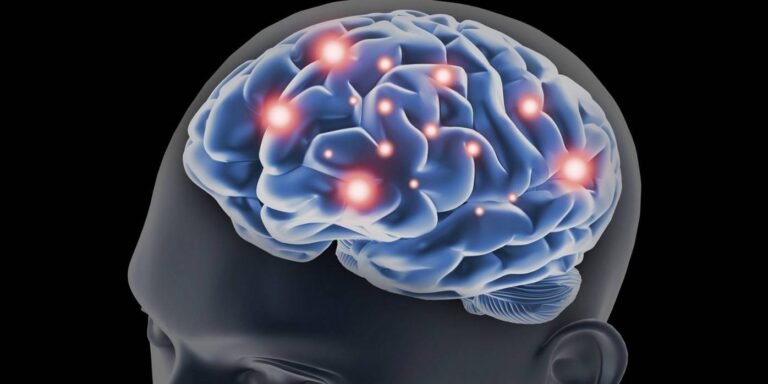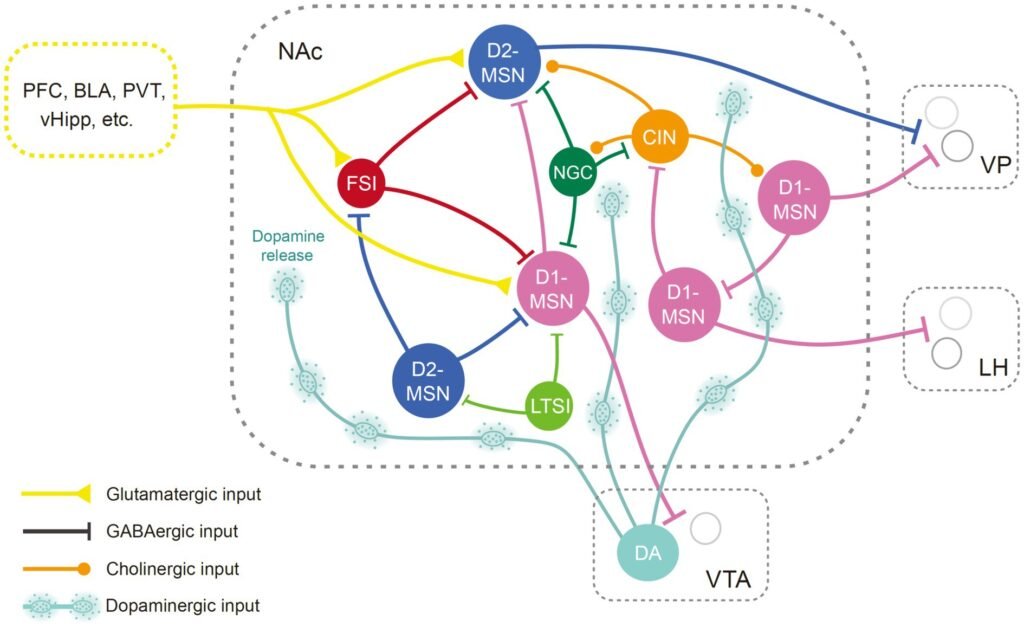
Dopamine detox is a trending concept in wellness circles, often promoted as a way to “reset” your brain. But a groundbreaking study published in Current Biology suggests that such thinking is deeply flawed. New insights into how dopamine helps the brain avoid harm, not just seek pleasure, reveal why simplistic detox ideas ignore the true complexity of this critical neurotransmitter.
Table of Contents
The Hidden Role of Dopamine in Avoidance Learning
Dopamine is popularly known as the “pleasure molecule” or the neurotransmitter behind all things enjoyable, from eating chocolate to scrolling TikTok. But dopamine is far more complex and multifaceted. Neuroscientists at Northwestern University have found that dopamine also helps us sidestep unpleasant outcomes, influencing how we learn from and respond to adverse situations.
The study focused on how different subregions of the nucleus accumbens, a key part of the brain’s reward system, respond to negative experiences. Specifically, the researchers studied the ventromedial shell and the core of the nucleus accumbens, which they suspected would show different patterns of dopamine activity during avoidance learning.
The Experiment: Teaching Mice to Avoid Discomfort
To investigate this, scientists used a behavioral paradigm with mice involving a two-chamber apparatus. A warning cue, a tone and a light, was given for five seconds before a mild footshock would be delivered. If the mouse crossed into the adjacent chamber during the cue, the shock was avoided. If not, the shock would start but stop immediately if the mouse moved.
This design allowed researchers to observe both avoidance (preventing the shock) and escape (reacting after the shock begins) behaviors.
Using fiber photometry and genetically encoded dopamine sensors, the team tracked real-time dopamine activity in the two regions of the nucleus accumbens as mice underwent training over several days.
Distinct Dopamine Patterns in the Brain

The study revealed a fascinating divergence in how each brain region processed aversive learning:
- Ventromedial Shell: Dopamine levels spiked during the shock early in training, then gradually shifted to respond to the warning cue as mice learned the cue-shock relationship. Over time, the dopamine response faded as avoidance became successful and predictable.
- Nucleus Accumbens Core: Dopamine levels dropped in response to both the shock and the cue. This decrease became more pronounced as the mice improved their ability to avoid the shock, suggesting this region helps refine learned avoidance behaviors.
These patterns also shifted based on the controllability of the outcome. When the researchers changed the rules so that the shock occurred regardless of the mouse’s behavior, dopamine patterns returned to early-stage responses. This demonstrates dopamine’s flexibility: it adjusts based on whether an environment is predictable or not.
Implications for Mental Health and Behavior
The findings are more than just a curiosity. They have real implications for understanding psychiatric conditions that involve excessive avoidance, such as anxiety, depression, and OCD.
Dysregulated dopamine function in the nucleus accumbens could cause people to overestimate threats or dangers, driving them to avoid situations unnecessarily. This can dramatically lower quality of life, hinder social engagement, and fuel chronic stress cycles.
Understanding the brain’s adaptive signaling in response to danger could lead to better treatments. For example, if specific circuits are responsible for over-avoidance, therapies or medications could target them more precisely.
What This Means for “Dopamine Detoxes”

The study also debunks common myths about dopamine and so-called “detox” protocols. Popular on social media, the “dopamine detox” trend suggests we should abstain from pleasurable activities (like junk food, video games, or social media) to reset our brain’s reward system.
But dopamine isn’t a bad guy, nor is it only tied to pleasure. As first author Gabriela Lopez explains, “Dopamine helps us learn from consequences, not just rewards.”
Senior author Talia Lerner emphasized: “We’re seeing opposite types of dopamine responses in different brain regions, evolving across learning stages. That complexity is totally missed in simplistic ideas like detoxing your dopamine.”
The key takeaway? Dopamine is a flexible, adaptive messenger involved in learning, motivation, and behavioral regulation, not just a source of pleasure we need to avoid.
Beyond the Study: Future Directions
Though the study was conducted in mice, its implications could eventually extend to humans. The team hopes to explore how chronic stress, addiction, and pain shape dopamine responses across different brain circuits.
They also want to study how individual differences in dopamine signaling affect how people learn from adversity. If some people’s brains are more sensitive to uncontrollable stress, that might explain why certain individuals are more prone to anxiety or compulsive avoidance.
Final Thoughts: A More Nuanced Understanding of Dopamine
This research serves as a powerful reminder that brain science isn’t black and white. Dopamine isn’t just about pleasure. It’s a vital part of how we survive, adapt, and learn to avoid harm.
The next time you hear someone preach about a dopamine detox, remember: dopamine doesn’t need to be purged. It needs to be understood. And with each new study, we’re getting closer to seeing the full picture of how this powerful chemical shapes our minds and behavior.





